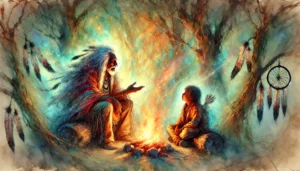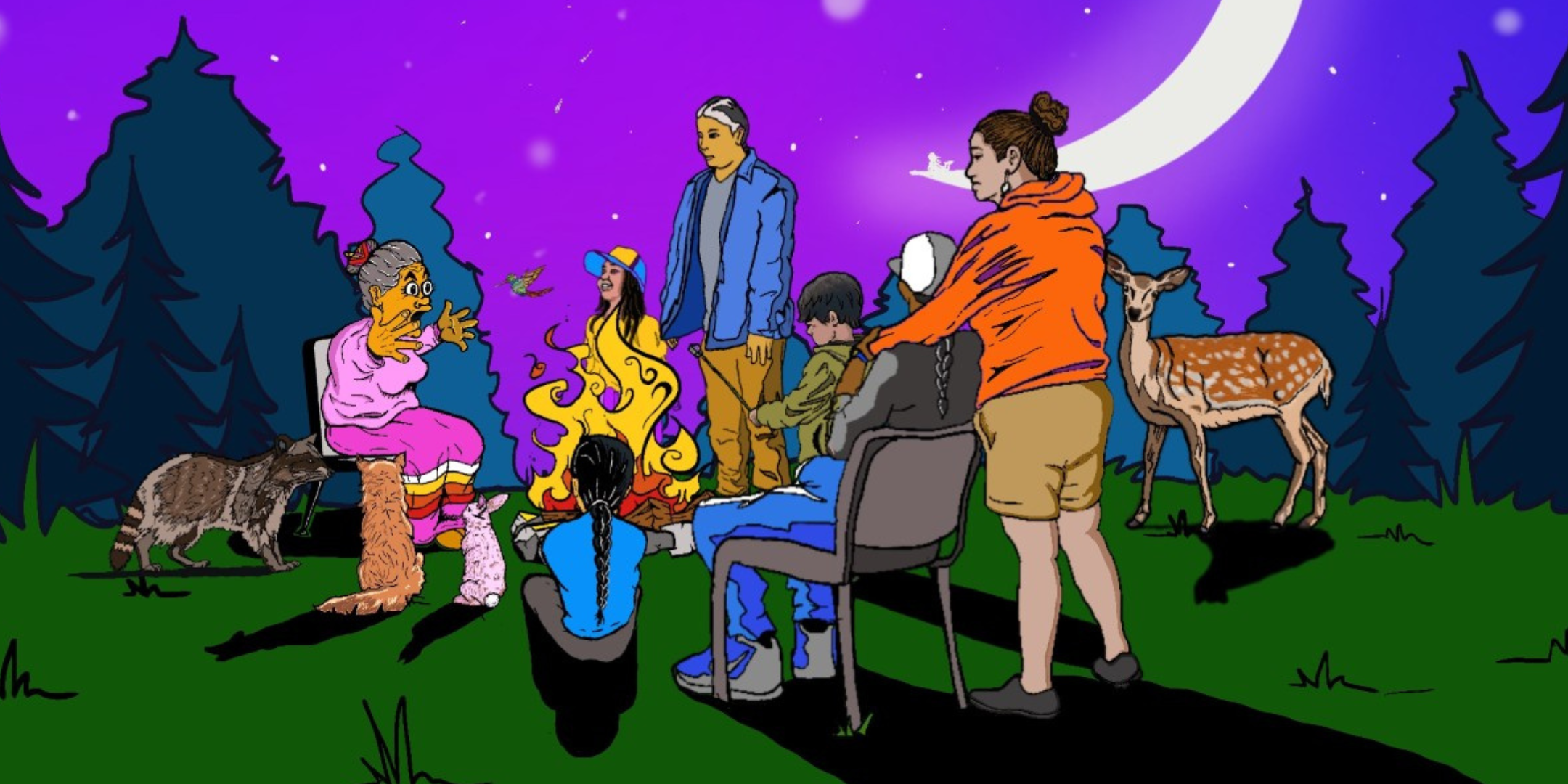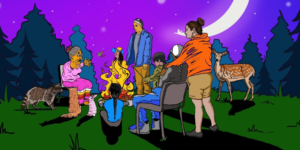
The Four Sacred Medicines
The Voices of Our Ancestors The Four Sacred MedicinesThe origins of Native American healing practice and ceremony are as diverse and rich as each of the hundreds of American tribes

Storytelling is the foundation of our identity, wisdom, history and resilience. Stories passed down from generation to generation when celebrations were held in the olden days. Oral histories of how our people came to these lands and the previous hardships that were met on the trails of adventure. These accounts held sacred because the stories have far surpassed the ancetriorial elders who told these hardships and have passed onto the next realm of life. Tales have been passed down from the history elder to the next rising history elder, one generation to the next, weaving together life lessons, morals, values, and a bridge of time that holds the test of time. A connection and story that will forever solidfy our current daily ordeals to our ancestors, and as long as we never forget our teachings, we will carry the heritage and strength of our people. But at its core, storytelling is what connects the tales of our people hundreds of years ago sharing stories at a celebration and us today.
Today, as modern challenges arise and traditions face increasing pressures of being forgotten, the call to remain connected to our ancestors is stronger than ever. We have lived through genocide against the military of the United States of America and militias who fought to expand westward. Remember, the United States of American waged a war against our people for 300 years and we are still here. Our stories as indigenous people is vital. Here’s how these traditions continue to guide, heal, and strengthen our communities.
Storytelling serves as the primary vessel for transmitting cultural knowledge, values, and teachings. Through oral traditions, our tribes preserve details of our history, beliefs, and health practices, hardships, morals, and life lessons ensuring that wisdom does not fade over time. Our stories teach younger generations pivotal lessons, like the Diné (Navajo) story about how the bear was in such a rush when he put his shoes on that his feet point inward. In doing so, the moral of the story is that you should not rush and/or that you should wake up early for your daily chores and not sleep in. In the Navajo culture of the southwest, the desert heat is intense, so you want to wake up early to either gather firewood, water the crops since the water would not evaporate or gather tádídíín (corn pollen).
Our stories interact with the world, embodying the essence of identity and legacy.
Key aspects of this oral education include:
Simply put, storytelling keeps identity alive while gifting each new generation the knowledge needed to live well and honor ancestral wisdom.
Many indigenous stories feature characters such as demi-gods, animals, legends, ordinary people or spirits, whose actions serve as examples of positive and negative behavior. Through these tales, listeners learn consequential lessons about the outcomes of choices they make, affecting personal and communal well-being.
For instance, some stories remind listeners of the dangers of greed or self-centeredness, while others praise selflessness, generosity, and honoring family and community. Because they connect directly with emotional and social life, these stories offer lifelong guidance that feels tangible and rooted, inspiring ethical choices.
Native American storytelling is deeply entwined with the natural world, a reflection of how tribes historically view the Earth as a shared home. Stories regularly feature animals, plants, water, and the land, allowing listeners to see how they too belong to the interconnected web of all living things.
This connection provides more than cultural knowledge—it is medicine for the soul. By fostering respect for the environment and the creatures that dwell within it, storytelling delivers a deeper sense of harmony, which can directly promote physical, mental, and spiritual health.
Lessons tied to the environment include topics such as proper stewardship of the land, conservation, and how to honor cycles like seasons. These reinforce not just sustainable practices but also a feeling of belonging and purpose grounded in nature itself.
Life’s challenges—be they personal struggles, grief, or historical trauma—can weigh heavily. Storytelling has become a therapeutic tool in Native communities, offering avenues for healing, reconciliation, and finding strength.
Whether it’s a tale about a brave ancestor overcoming obstacles or a wise animal guiding a protagonist, these narratives become reminders of the inner fortitude within every individual.
Perhaps one of the most cherished aspects of Native storytelling is its role in bringing people together. To gather and share a tale—whether around a fire or at gatherings—is to cultivate belonging, trust, and cultural pride.
Communal storytelling strengthens ties, encouraging unity even in adversity. By reflecting triumphs and challenges shared across generations, these moments of connection help build resilience. Communities become stronger when their stories remain intact and vibrant.
Recognizing how stories shape knowledge and behavior, many Native communities already use storytelling to address modern needs around health and wellness. Some inspiring examples include:
By blending traditional narratives with modern health methodologies, Native communities can remain firmly rooted in their culture while addressing today’s challenges effectively.
Storytelling is a gift. It is ancestral wisdom woven through generations, shaping who we are, where we come from, and where we’re heading. But in a fast-paced, highly modernized world, this tradition can feel at risk of fading.
Now, more than ever, Native people can reignite the power of storytelling as a bridge to cultural continuity. Gatherings, recorded oral histories, or even infusing stories into technology, podcasts, or social media platforms, can keep these traditions alive.
To all Native Americans passionate about the preservation of our cultural heritage: Your voice carries the legacy of countless generations. Share your stories, teach the young, and raise the wisdom that lives in our souls, because in every tale, there is the strength to heal, connect, and thrive.
Reconnect with the stories of the past. Reclaim them for the future.

The Voices of Our Ancestors The Four Sacred MedicinesThe origins of Native American healing practice and ceremony are as diverse and rich as each of the hundreds of American tribes

The Voices of Our Ancestors The Seven Sacred Branches are the principles of character that each Anishinaabe should live by. Love, Respect, Courage, Honesty, Wisdom, Humility, Truth. According to the

The Voices of Our Ancestors Storytelling is the foundation of our identity, wisdom, history and resilience. Stories passed down from generation to generation when celebrations were held in the olden